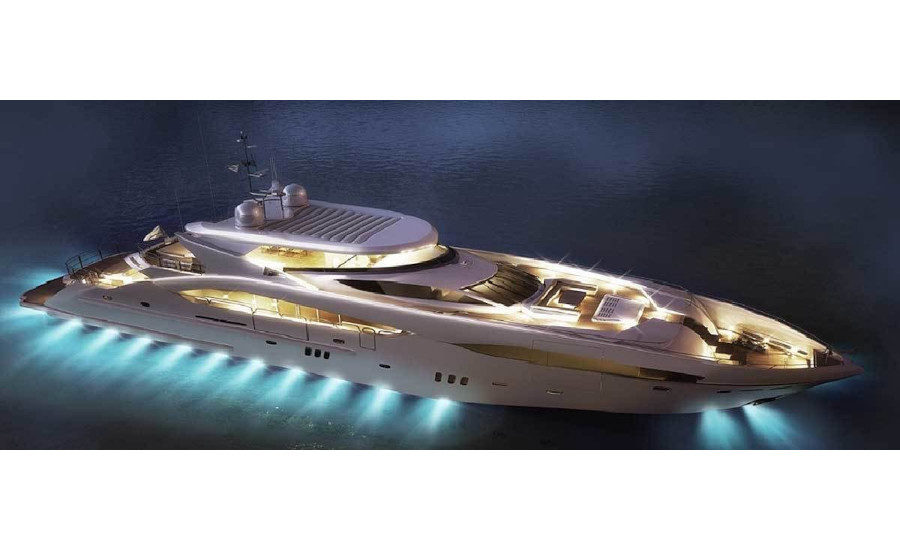On the water, yachts and superyachts are wonderful to look at and be aboard. But, in the factory, these vessels present a major assembly challenge: Accurately positioning, aligning and joining the large, composite components of the hull.
Sunseeker International, based in Poole, England, has been manufacturing yachts and superyachts since 1969. However, it wasn’t until 2019 that the company found a better way to complete this difficult task.
That year, Stuart Jones, composite development manager at Sunseeker, had FARO UK perform an onsite demonstration of its Vantage laser tracker (a coordinate measuring machine) and TracerM laser projector at the Sunseeker plant. He was so impressed that, shortly afterward, he ordered one tracker and four projectors.
“Having previously utilized conventional, time-consuming means of measurement and inspection, we made a quantum leap with the Vantage tracker,” explains Jones. “We are now able to rapidly and accurately capture the 3D base geometry of [all] components and ensure that they adhere to the designs [we] generate [using] our in-house design and manufacturing software. This data is used by the projectors to project various templates and location positions onto our hulls [to ensure] the precise fitting of key components during build.”
Sunseeker also uses the tracker to accurately compare many other yacht components against their original software models. According to Jones, the tracker’s light weight, portability and robust construction allow it to be brought to suppliers to assist them in component measurement so they can make the relevant rectification measures when needed.
“Many of our parts have tight tolerances, and the tracker lets us accurately detect and quantify any deflection or change in the geometrical shape of components that could cause later assembly issues,” says Jones. “The precise data gathered by the tracker [allows us] to take early corrective actions and avoid more problematic issues later in the build process.”
As for the TracerM projectors, Jones is quite impressed with their capability to variably focus over a range of from 1.8 to 15.2 meters. Sunseeker workers use the projectors to project precise, virtual templates that enable individual datum to be marked. This process ensures the accurate location of critical components such as bulkheads, longitudinal elements, stringers and engine beds.
“The [main] benefit of the projections is we are able to quickly and accurately complete the ‘right-first-time’ positioning of these important features in all three dimensions,” notes Jones. “The precision we achieve at this stage in establishing an accurate, solid base of a boat’s build provides many benefits later in the process.”
One such benefit is reduced build times. Jones points to the installation of wire-looms on deck liners as an example of eliminating a production bottleneck and shortening production by two days.
“Previously, two people would have manually [measured] out the cable routes with a tape measure and marked their routes with marker pens, returning later to then fit the looms in situ,” says Jones. “Now, our TracerM projects a wire-loom design model onto the deck liner surface, and the cable mounts and looms are fitted in one rapid, accurate procedure. This avoids problems such as cable pinching during final assembly.”
Steve Efford, manufacturing engineering manager at Sunseeker, says the company’s FARO equipment investment has not only reduced inspection cycle times by 50 to75 percent and optimized plant productivity. It has also sparked new thoughts for additional tracking and projecting opportunities in future projects.
For more information on laser-based measuring and projecting equipment, call 800-736-0234 or visit www.faro.com.





